| Listing 1 - 10 of 13 | << page >> |
Sort by
|
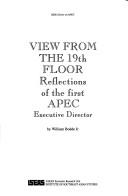
ISBN: 9814379271 9813016930 Year: 1994 Publisher: Singapore : ASEAN Economic Research Unit, Institute of Southeast Asian Studies,
Abstract | Keywords | Export | Availability | Bookmark
 Loading...
Loading...Choose an application
- Reference Manager
- EndNote
- RefWorks (Direct export to RefWorks)
VIEW FROM THE 19th FLOOR: Reflections of the first APEC Executive Director is, in the words of the author, "part narrative, part case study and part of my own thoughts about where APEC should be headed". In 1993, United States Ambassador William Bodde was sent to Singapore to set up a new economic organization. Bodde clearly relished the challenge of establishing a brand new international economic organization in the most dynamic region of the world. Instructed to keep the Secretariat small, effective and financially accountable, he describes his efforts to build a functioning, cross-cultural institution in less than a year. He also has to satisfy the fifteen-member economies spanning the Pacific that the organization reflected the wishes of all APEC members and not just those of the United States! This account, in addition to serving as a case study in international public administration, chronicles the meetings of the APEC Senior Officials and Ministers leading up to the historic APEC Leader's Meeting in Seattle at the end of 1993. He concludes the monographs with a number of provocative organizational and policy recommendations for the future of APEC.
Pacific Area cooperation. --- Pacific cooperation --- International cooperation --- Asia Pacific Economic Cooperation (Organization) --- Asia Pacific Economic Cooperation Council --- APEC --- A-Tʻae Kyŏngje Hyŏmnyŏkchʻe --- Ya-Tʻai ching ho tsu chih --- Aziatsko-tikhookeanskoe ėkonomicheskoe sotrudnichestvo (Organization) --- ATĖS --- Mecanismo de Cooperación Económica Asia Pacífico --- 亞太經濟合作組織 --- Cooperación Económica en Asia Pacífico (Organization) --- Diẽ̂n đàn hợp tác kinh té̂ châu Á--Thái Bình Dương
Book
ISBN: 9814279277 9814279269 Year: 2009 Publisher: Singapore : Institute of Southeast Asian Studies,
Abstract | Keywords | Export | Availability | Bookmark
 Loading...
Loading...Choose an application
- Reference Manager
- EndNote
- RefWorks (Direct export to RefWorks)
Spanning 20 years of history, the achievements of APEC may seem uneventful in the eyes of some observers. Yet careful deliberation will point to APEC's many remarkable high points as well as some of the challenges. The foundations of APEC were set in place about 40 years ago based on the achievements of the Association of Southeast Asian Nations (ASEAN) and the Pacific Economic Cooperation Council (PECC). One of the cornerstones of APEC's vision is to achieve a free and open trade area among its member economies. This vision is anchored in the Bogor Goals that remain the centrepiece of the APEC process. The Bogor Goals represent a cause for celebration as well as angst. Celebration because the region has moved towards achieving a much more liberalized environment of trading and investment since 1989, angst because the deadlines for achieving the goals have not yet been fully realized.Today, APEC embraces many of the world's dynamic developed and developing economies that are better poised to meet the new challenges of this century. For those seeking to get a quick sweep of APEC, this book recalls, reflects and provides enough food for thought on the possible remake of APEC. The chapters are carefully written by experts who have been directly involved in the APEC process one way or another. The invaluable insights serve to place the whole APEC process in a balanced perspective, yet with candid deliberations.
Asian cooperation. --- Pacific Area cooperation. --- Pacific cooperation --- International cooperation --- Asia Pacific Economic Cooperation (Organization) --- Asia Pacific Economic Cooperation Council --- APEC --- A-Tʻae Kyŏngje Hyŏmnyŏkchʻe --- Ya-Tʻai ching ho tsu chih --- Aziatsko-tikhookeanskoe ėkonomicheskoe sotrudnichestvo (Organization) --- ATĖS --- Mecanismo de Cooperación Económica Asia Pacífico --- 亞太經濟合作組織 --- Cooperación Económica en Asia Pacífico (Organization) --- Diẽ̂n đàn hợp tác kinh té̂ châu Á--Thái Bình Dương --- Asia --- Pacific Area --- Economic integration.
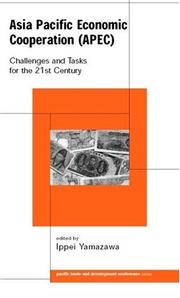
ISBN: 041524806X 0415248051 9786610281619 1280281618 0203402383 1134537719 1134537700 9780203402382 6610281610 0203411129 9780415248051 9780415248068 9781134537716 9781134537662 1134537662 9781134537709 1590336984 Year: 2000 Publisher: London Routledge
Abstract | Keywords | Export | Availability | Bookmark
 Loading...
Loading...Choose an application
- Reference Manager
- EndNote
- RefWorks (Direct export to RefWorks)
This book provides the most up-to-date and comprehensive account of the APEC (Asia Pacific Economic Cooperation) organisation and examines the challenges APEC now faces in the new century. Subjects covered include:* the history of APEC* APEC and the latest WTO round* case-studies of countries in the region including China, Japan, Malaysia, Korea and Taiwan* APECs approach to competition and deregulation policy* assessment of APECs standing as an international institutionFeaturing contributions from distinguished groups of international academic experts, this book is ess
International economic relations --- Asia-Pacific Economic Cooperation --- anno 2000-2099 --- Asian cooperation. --- Asian cooperation-- Congresses. --- Pacific Area cooperation. --- Economic History --- Business & Economics --- Asia Pacific Economic Cooperation (Organization) --- Asia --- Pacific Area --- Economic integration. --- Asia Pacific Economic Cooperation Council --- APEC --- A-Tʻae Kyŏngje Hyŏmnyŏkchʻe --- Ya-Tʻai ching ho tsu chih --- Aziatsko-tikhookeanskoe ėkonomicheskoe sotrudnichestvo (Organization) --- ATĖS --- Mecanismo de Cooperación Económica Asia Pacífico --- 亞太經濟合作組織 --- Cooperación Económica en Asia Pacífico (Organization) --- Diẽ̂n đàn hợp tác kinh té̂ châu Á--Thái Bình Dương --- Asian cooperation --- Pacific Area cooperation --- Foreign economic relations
Periodical
ISSN: 1441063X Year: 1997 Publisher: Canberra, Australia : Australia-Japan Research Centre
Abstract | Keywords | Export | Availability | Bookmark
 Loading...
Loading...Choose an application
- Reference Manager
- EndNote
- RefWorks (Direct export to RefWorks)
Pacific Area cooperation --- Economische situatie. --- Economic conditions --- Asia Pacific Economic Cooperation (Organization) --- Asia --- Oost-Azië. --- Oceanië. --- Pacific cooperation --- Asia Pacific Economic Cooperation Council --- APEC --- A-Tʻae Kyŏngje Hyŏmnyŏkchʻe --- Ya-Tʻai ching ho tsu chih --- Aziatsko-tikhookeanskoe ėkonomicheskoe sotrudnichestvo (Organization) --- ATĖS --- Mecanismo de Cooperación Económica Asia Pacífico --- 亞太經濟合作組織 --- Cooperación Económica en Asia Pacífico (Organization) --- Diẽ̂n đàn hợp tác kinh té̂ châu Á--Thái Bình Dương --- Asian and Pacific Council countries --- Oost-Azië. --- Oceanië. --- International cooperation --- Eastern Hemisphere --- Eurasia --- Economic history. --- Since 1945 --- Asia. --- 83.30 economic conditions, development and structure: general. --- History, Economic --- Economics
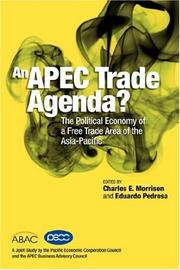
ISBN: 9812304614 9812304606 Year: 2007 Publisher: Singapore : Institute of Southeast Asian Studies,
Abstract | Keywords | Export | Availability | Bookmark
 Loading...
Loading...Choose an application
- Reference Manager
- EndNote
- RefWorks (Direct export to RefWorks)
The proposal for an Asia-Pacific-wide free trade agreement is one of the oldest ideas for promoting mutually beneficial regional cooperation dating back to the mid-1960s. In more recent times, the idea has found new support for two main reasons: as a plan B to the stumbling Doha Development Agenda (DDA) round of WTO negotiations; and as a solution to the noodle bowl of bilateral agreements in the region. This report assesses the political feasibility of the Free Trade Area of the Asia-Pacific (FTAAP) proposal and looks at alternative modalities for achieving free trade and investment in the Asia-Pacific. The report includes trade policy perspectives from the three largest economies of the region: the United States, China and Japan, lessons from similar proposals such as the Free Trade Area of the Americas (FTAA), possible convergence among the many preferential trade agreements (PTAs) in the region, and alternative approaches to regional economic integration.
Free trade --- Commerce --- Business & Economics --- International Commerce --- Asia Pacific Economic Cooperation (Organization) --- Pacific Area --- Asia --- Commercial policy. --- Asia Pacific Economic Cooperation Council --- APEC --- A-Tʻae Kyŏngje Hyŏmnyŏkchʻe --- Ya-Tʻai ching ho tsu chih --- Aziatsko-tikhookeanskoe ėkonomicheskoe sotrudnichestvo (Organization) --- ATĖS --- Mecanismo de Cooperación Económica Asia Pacífico --- 亞太經濟合作組織 --- Cooperación Económica en Asia Pacífico (Organization) --- Diẽ̂n đàn hợp tác kinh té̂ châu Á--Thái Bình Dương --- Asian and Pacific Council countries --- Eastern Hemisphere --- Eurasia --- Asia-Pacific Region --- Asian-Pacific Region --- Pacific Ocean Region --- Pacific Region --- Pacific Rim
Book
ISBN: 1616683805 9781616683801 9781607414568 1607414562 Year: 2010 Publisher: New York
Abstract | Keywords | Export | Availability | Bookmark
 Loading...
Loading...Choose an application
- Reference Manager
- EndNote
- RefWorks (Direct export to RefWorks)
Security, International --- Asia Pacific Economic Cooperation (Organization) --- East Asia --- Economic policy. --- Foreign economic relations. --- Foreign relations. --- Collective security --- International security --- International relations --- Disarmament --- International organization --- Peace --- Asia Pacific Economic Cooperation Council --- APEC --- A-Tʻae Kyŏngje Hyŏmnyŏkchʻe --- Ya-Tʻai ching ho tsu chih --- Aziatsko-tikhookeanskoe ėkonomicheskoe sotrudnichestvo (Organization) --- ATĖS --- Mecanismo de Cooperación Económica Asia Pacífico --- 亞太經濟合作組織 --- Cooperación Económica en Asia Pacífico (Organization) --- Diẽ̂n đàn hợp tác kinh té̂ châu Á--Thái Bình Dương
Book
ISBN: 9814311642 9814311634 Year: 2012 Publisher: Singapore : Institute of Southeast Asian Studies,
Abstract | Keywords | Export | Availability | Bookmark
 Loading...
Loading...Choose an application
- Reference Manager
- EndNote
- RefWorks (Direct export to RefWorks)
Ippei Yamazawa is one of the fathers to the study of Asia-Pacific regional cooperation in Japan and has contributed hugely to the development and work of APEC over many years. APEC is a crucial trans-regional arrangement that draws the United States into constructive economic engagement with East Asia. This book makes it clear why APEC remains such a crucial element of regional economic architecture and defines an agenda going forward to which regional leaders should aspire. Here is a first rate exposition of the priorities for regional cooperation in Asia and the Pacific. --Peter Drysdale, Professor Emeritus, Australian National University
Pacific Area cooperation. --- Asian cooperation. --- International cooperation --- Pacific cooperation --- Asia Pacific Economic Cooperation (Organization) --- Asia Pacific Economic Cooperation Council --- APEC --- A-Tʻae Kyŏngje Hyŏmnyŏkchʻe --- Ya-Tʻai ching ho tsu chih --- Aziatsko-tikhookeanskoe ėkonomicheskoe sotrudnichestvo (Organization) --- ATĖS --- Mecanismo de Cooperación Económica Asia Pacífico --- 亞太經濟合作組織 --- Cooperación Económica en Asia Pacífico (Organization) --- Diẽ̂n đàn hợp tác kinh té̂ châu Á--Thái Bình Dương --- Pacific Area --- Asia --- Economic integration. --- Economics.
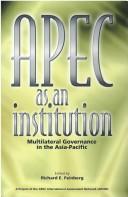
ISBN: 9812302093 9812305017 Year: 2003 Publisher: Singapore : Institute of Southeast Asian Studies,
Abstract | Keywords | Export | Availability | Bookmark
 Loading...
Loading...Choose an application
- Reference Manager
- EndNote
- RefWorks (Direct export to RefWorks)
APEC is an experimental multilateralism, relying not on a large bureaucracy but rather upon national government agencies, semi-autonomous inter-governmental committees and "virtual" associations. Organized around the principles of consensus, voluntarism and unilateralism, APEC has eschewed binding agreements enforced through monitoring and robust compliance mechanisms. This volume assesses the strengths and weaknesses of APEC's "soft" institutionalism, and its capstone policy report, "Remaking APEC", identifies reforms that would close the credibility gap between APEC's promises and accomplishments. Chapters by leading scholars at APEC Study Centres investigate APEC's core agenda -- trade and investment liberalization and capacity-building -- delve into the inner workings of APEC's bureaucracy, and explore APEC's interactions with civil society, including the private sector and NGOs. This volume contains both the policy report and in-depth specialized studies. It is the product of the APEC International Assessment Network (APIAN), a collaborative, independent project among participating APEC Study Centres. APIAN's first major study, Assessing APEC's Progress: Trade, Ecotech and Institutions was also published by ISEAS (2001).
Economic conditions. Economic development --- Foreign trade policy --- Asia-Pacific Economic Cooperation --- Asian cooperation. --- Pacific Area cooperation. --- Asia Pacific Economic Cooperation (Organization) --- Asia --- Pacific Area --- Economic integration. --- Pacific cooperation --- International cooperation --- Asia Pacific Economic Cooperation Council --- APEC --- A-Tʻae Kyŏngje Hyŏmnyŏkchʻe --- Ya-Tʻai ching ho tsu chih --- Aziatsko-tikhookeanskoe ėkonomicheskoe sotrudnichestvo (Organization) --- ATĖS --- Mecanismo de Cooperación Económica Asia Pacífico --- 亞太經濟合作組織 --- Cooperación Económica en Asia Pacífico (Organization) --- Diẽ̂n đàn hợp tác kinh té̂ châu Á--Thái Bình Dương
Book
ISBN: 9789814311632 9789814311649 Year: 2012 Publisher: Singapore Institute of Southeast Asian Studies
Abstract | Keywords | Export | Availability | Bookmark
 Loading...
Loading...Choose an application
- Reference Manager
- EndNote
- RefWorks (Direct export to RefWorks)
Asian cooperation --- Pacific Area cooperation --- J4300.90 --- J4541.02 --- K9400.80 --- K9461.02 --- S10/0641 --- Pacific cooperation --- International cooperation --- Japan: Economy and industry -- history -- postwar Shōwa (1945- ), Heisei period (1989- ), contemporary --- Japan: Economy and industry -- commerce and trade -- international trade, economic relations and policy -- Asia -- ASEAN, APEC --- Korea: Economy and industry -- history -- modern period, postwar period (1945- ) --- Korea: International trade and economic relations (South) Korea -- Asia -- economic organizations (ASEAN, APEC) --- China: Economics, industry and commerce--Foreign trade and economic relations: since 1989 --- Asia Pacific Economic Cooperation (Organization) --- Asia Pacific Economic Cooperation Council --- APEC --- A-Tʻae Kyŏngje Hyŏmnyŏkchʻe --- Ya-Tʻai ching ho tsu chih --- Aziatsko-tikhookeanskoe ėkonomicheskoe sotrudnichestvo (Organization) --- ATĖS --- Mecanismo de Cooperación Económica Asia Pacífico --- 亞太經濟合作組織 --- Cooperación Económica en Asia Pacífico (Organization) --- Diẽ̂n đàn hợp tác kinh té̂ châu Á--Thái Bình Dương --- Asia --- Pacific Area --- Economic integration.
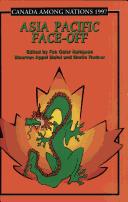
ISBN: 1282864203 9786612864209 0773574069 9780773574069 0886293278 9780886293277 9781282864207 6612864206 Year: 1997 Publisher: Montreal : McGill-Queens University Press,
Abstract | Keywords | Export | Availability | Bookmark
 Loading...
Loading...Choose an application
- Reference Manager
- EndNote
- RefWorks (Direct export to RefWorks)
Asia Pacific Face-Off is the thirteenth in the Canada Among Nations series published by The Norman Paterson School of International Affairs. In recognition of the government's designation of 1997 as Canada's Year of Asia Pacific, the volume focuses on aspects of Canada's relations with the countries in this region. During 1997 Canada will host the annual Leaders Meeting of the Asia Pacific Economic Cooperation (APEC) forum and a number of apec ministerial meetings. As many of our contributors suggest, Canada has not yet acquired much of a presence in the Asia Pacific region, and we have some distance to go before our status as an Asia Pacific nation is taken seriously by our APEC partners. The high profile of Team Canada missions should not be mistakenly interpreted as evidence of concerted Canadian policy with respect to Asia Pacific. In terms of educational or economic linkages with the countries of APEC, Canada could take lessons from Australia, a country whose policies our authors compare with Canada's.
Free trade --- Labor policy --- International relations. --- Security, International. --- International trade. --- International economic relations. --- Economic policy, Foreign --- Economic relations, Foreign --- Economics, International --- Foreign economic policy --- Foreign economic relations --- Interdependence of nations --- International economic policy --- International economics --- New international economic order --- Economic policy --- International relations --- Economic sanctions --- External trade --- Foreign commerce --- Foreign trade --- Global commerce --- Global trade --- Trade, International --- World trade --- Commerce --- International economic relations --- Non-traded goods --- Collective security --- International security --- Disarmament --- International organization --- Peace --- Coexistence --- Foreign affairs --- Foreign policy --- Foreign relations --- Global governance --- International affairs --- Peaceful coexistence --- World order --- National security --- Sovereignty --- World politics --- Labor --- State and labor --- Free trade and protection --- Trade, Free --- Trade liberalization --- International trade --- Government policy --- Asia Pacific Economic Cooperation (Organization) --- ASEAN --- Association of Southeast Asian nations --- Asia Pacific Economic Cooperation Council --- APEC --- A-Tʻae Kyŏngje Hyŏmnyŏkchʻe --- Ya-Tʻai ching ho tsu chih --- Aziatsko-tikhookeanskoe ėkonomicheskoe sotrudnichestvo (Organization) --- ATĖS --- Mecanismo de Cooperación Económica Asia Pacífico --- 亞太經濟合作組織 --- Cooperación Económica en Asia Pacífico (Organization) --- Diẽ̂n đàn hợp tác kinh té̂ châu Á--Thái Bình Dương --- Canada --- Canada (Province) --- Canadae --- Ceanada --- Chanada --- Chanadey --- Dominio del Canadá --- Dominion of Canada --- Jianada --- Kʻaenada --- Kanada (Dominion) --- Ḳanadah --- Kanadaja --- Kanadas --- Ḳanade --- Kanado --- Kanakā --- Province of Canada --- Republica de Canadá --- Yn Chanadey --- Καναδάς --- Канада --- קאנאדע --- קנדה --- كندا --- کانادا --- カナダ --- 加拿大 --- 캐나다 --- Lower Canada --- Upper Canada --- Politics and government --- Kaineḍā --- History
| Listing 1 - 10 of 13 | << page >> |
Sort by
|

 Search
Search Feedback
Feedback About UniCat
About UniCat  Help
Help News
News